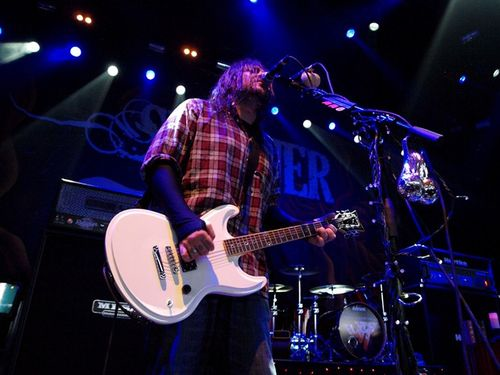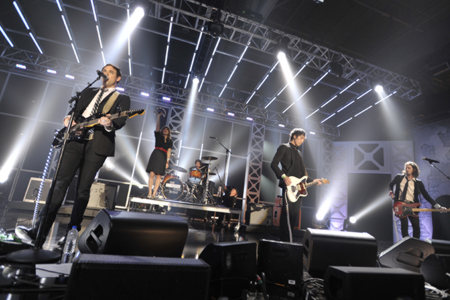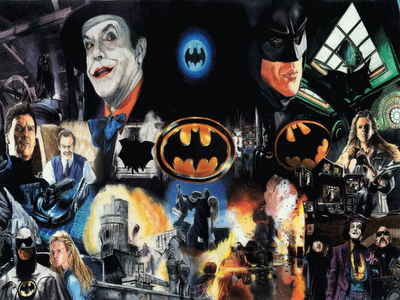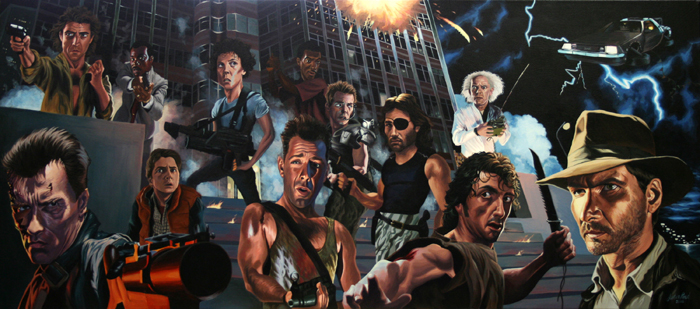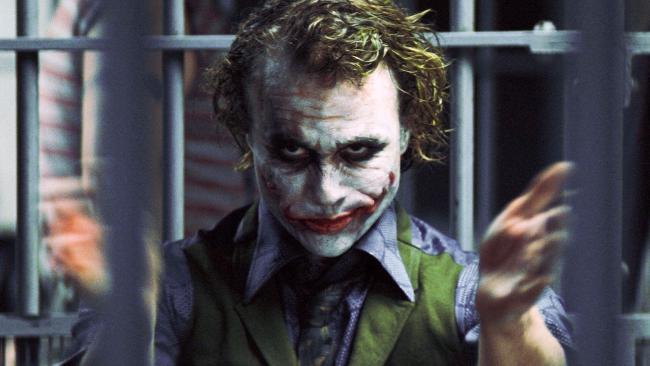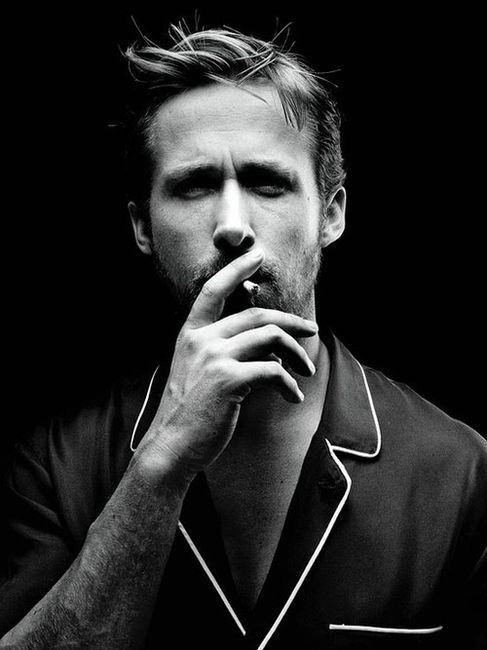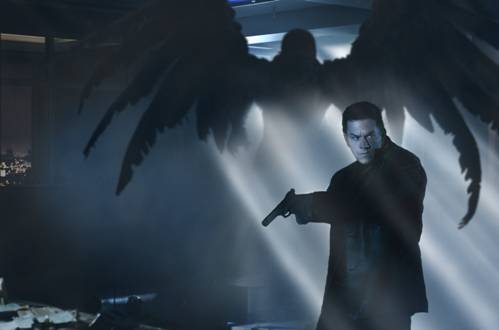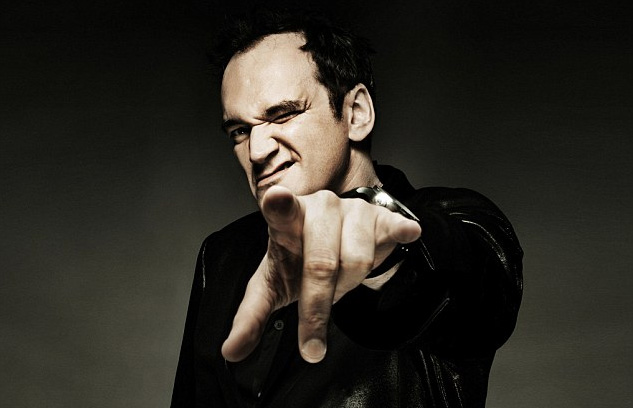The Film Studies Dictionary defines action films as: “fast-paced narratives which feature a lot of violence and physical action such as chases, fights, stunts, crashes and explosions, and where action dominates over dialogue and character (Barry Grant, 2001). The action film has existed in America since the beginnings of cinema and truly has enjoyed a robust career over the decades.
However, the action film truly became a genre of its own during the 1980s. Gone were the days of the character driven art film that came to define cinema in the 1970s. The 1980s were a new decade and thus needed an invigorated identity. As a result, the action film became the symbol of a new United States of America.
Film in the 1970s
Society had undergone tremendous change during the 1960s. Revolutions, the struggle for equality and war dominated the landscape and altered society in an un-American way. Society was growing weary of the conflicting nature of government officials and, as a result, rebellion and violence against government formed establishments escalated. As times grew bleaker and solutions seemed unreachable, society seemed to be on the verge of complete annihilation.
Then the 1970s arrived. Vietnam was still a reality and scandals (Watergate) and the threat of impeachment ran rampant throughout the White House resulting in the eventual demise of President Richard Nixon. Society was continuing on in its tailspin and there appeared to be no escaping the reality that the country was falling apart.
Thus films began to take on an identity of their own. Gone were the days of the Utopian-oozing Hollywood extravaganzas (My Fair Lady-1964, The Sound of Music-1965, etc.). Society wanted reality and the films prominent during this decade attempted to mirror the confusion, angst and disillusionment that came to define Americana in the 1970s.
Rarely were there any forms of hope in these films. Films such as Five Easy Pieces (1970) and Taxi Driver (1976) were all about the loss of self in an ever changing world. There was no longer a defined ideology to lean on. These were now the days of the ‘every man for himself’ mentality. The establishments that society had placed their trust in had collapsed and civilization neared the brink of all out anarchy.
Film in the 1980s
The 1960s and 70s had been strenuous on the fabric of American society, so what better way to go about creating change than to elect a former Hollywood actor as President.
The 1980s needed revitalization.
Ronald Reagan did bring great change to America. In fact, Reagan pursued policies that reflected his personal belief in individual freedom and the United States economy. He wanted to aid in the restructuring of the once heralded nation and reinvigorate the individual as a necessary part of that change. Thus Reagan went about expanding the military while simultaneously telling people to feel good about themselves again.
Being a former actor, Reagan had been inspired by the simplistic mythology of movies: good triumphs evil, might is right and true love lasts forever (The Movies of the Eighties, Base, 1990). Regan was smart. He understood the importance of American cinema and how it could be used as an inspirational tool.
In the 1970s, two films went about changing the landscape of cinema forever. Jaws (1975) and Star Wars (1977) ushered in a new form of entertainment. As the 1970s character driven films declined in appeal, the blockbuster film emerged as a powerhouse (which is still prominent today). Films began to stress the importance of the individual and his crucial role in the world. As is the case with Star Wars, a young farm boy, Luke Skywalker, uncertain of his place in the galaxy desires to be something more. Through uncertainty and eventual acceptance, Luke becomes the savior of the universe.
The individual taking control of his destiny was an inspiring message for society. They were not just faceless human beings. They all served a purpose and if they chose to follow their aspirations, great things would ensue.
Rambo and Commando
The American morale was now reinvigorated, but the question was how to continually convey it.
There was a solution, though.
Through the means of film, the importance of the individual and what he could do for his country were consistently reinforced. As a result, an extremely right wing mentality began to form within the mindset of the heroic individuals in film. If one wanted something then one had the power to achieve it.
Characters such as Sylvester Stallone’s John Rambo, Arnold Schwarzenegger’s John Matrix (Commando-1985) and Bruce Willis’s John McClane (Die Hard-1988) all became idealized heroes who overcame their inabilities as individuals and persevered as American heroes (of note, it is interesting that all three names represent the All-American, everyman name of John).
During the 1980s, most American action films were about the destruction of enemies threatening American soil. In a theoretical sense, these films were an expression of American ideology regarding politics and gender. It was about the reassertion of male power and privilege during and after the Reagan administration (Film Studies Dictionary, 2001).
Thus one could understand the character of John Rambo more as a product of political undertakings than as an individual in his own right. In Rambo: First Blood Part 2 (1985), the character of John Rambo was a product of the Reagan years and actually served as a substitute for U.S. victory in the Vietnam War (Base, 1990). By wrapping himself in the American flag (and destroying an Island of Vietnamese single-handedly), Rambo became a symbol of hope and understanding for Americans.
The 1980s action films are not great (there are exceptions) but they serve a political purpose. They helped to re-establish the American identity (Fascist as it may be in this case) and to create hope for the individual. Through the strengths of the everyman, freedom and peace re-emerged through the use of the machine gun.

